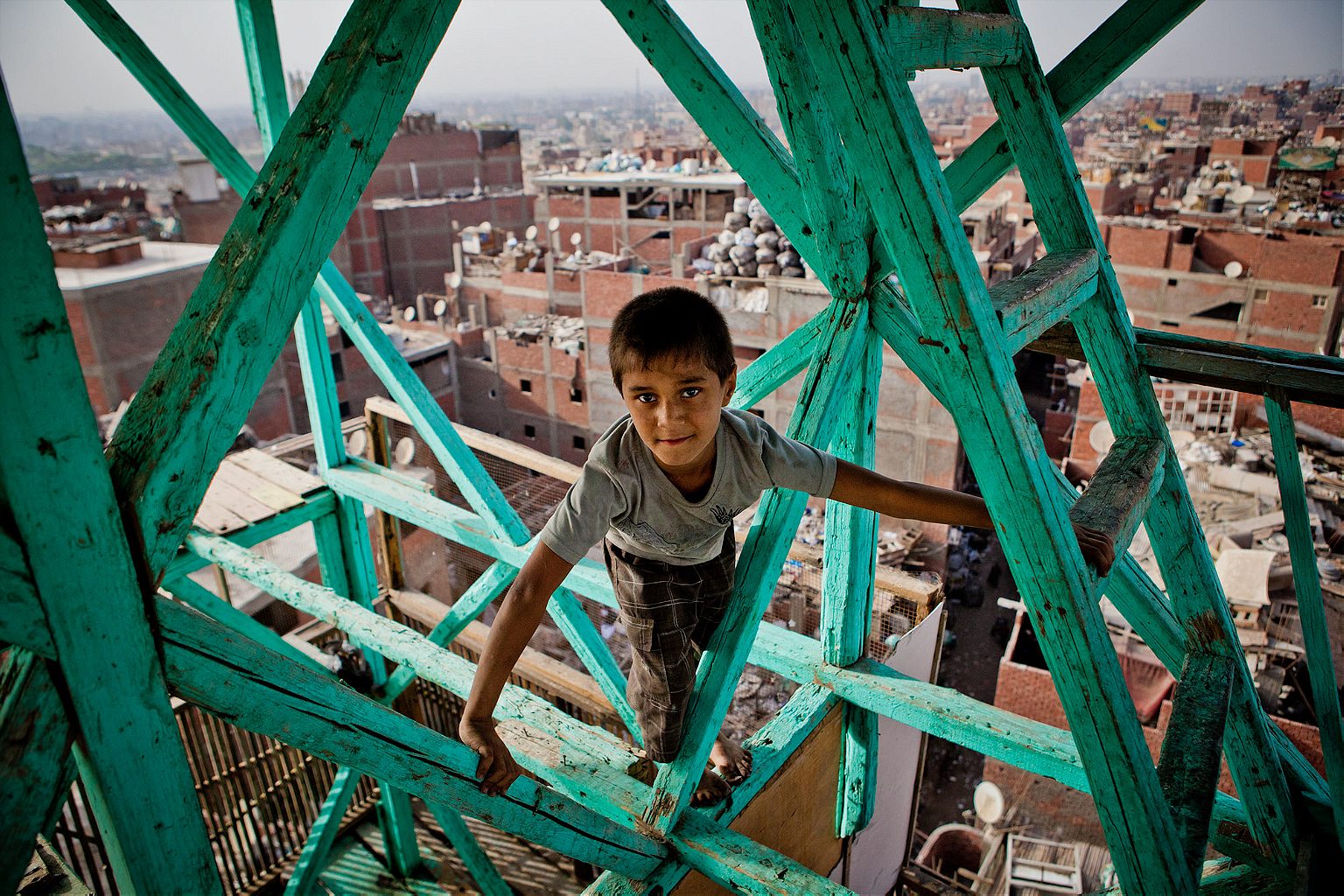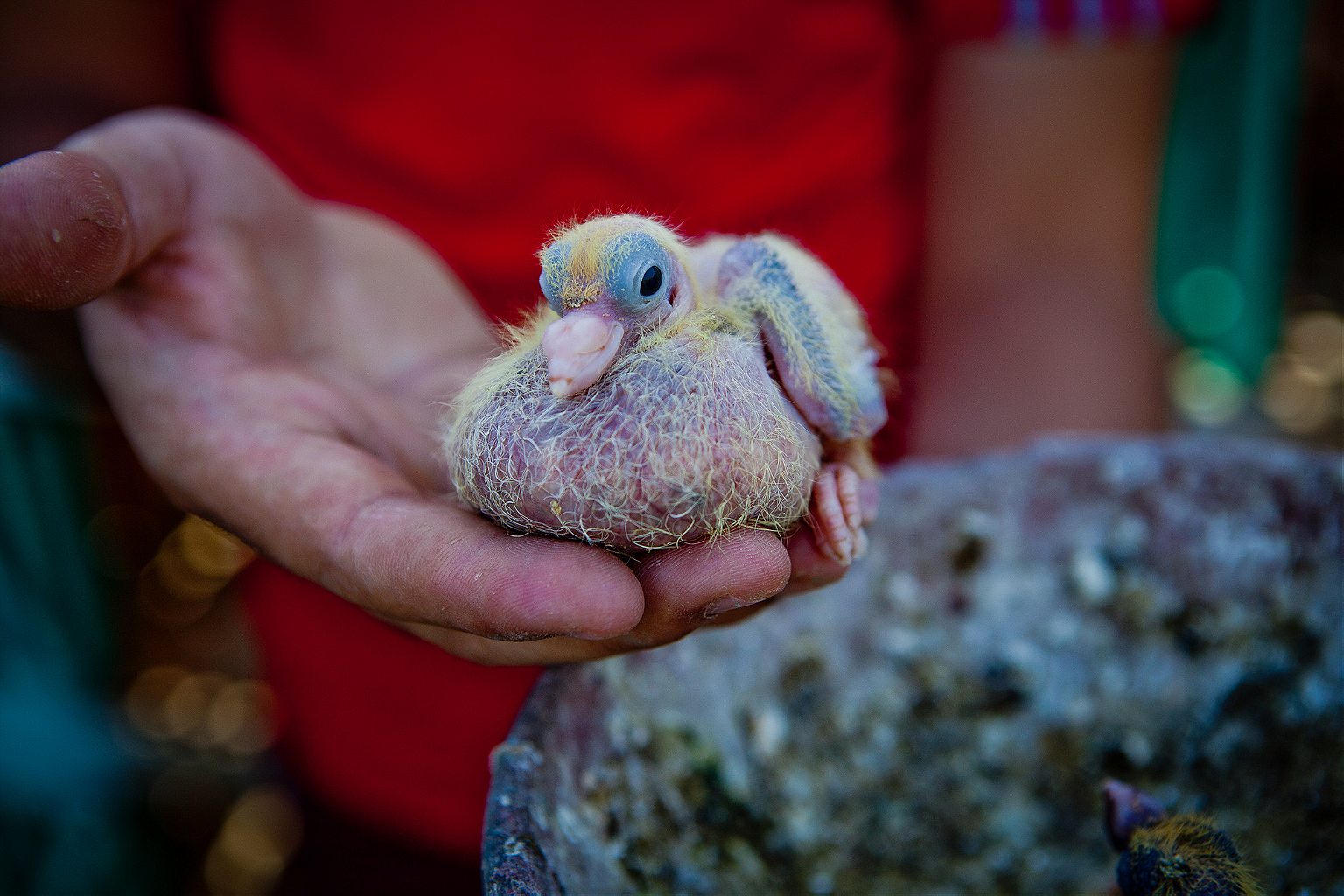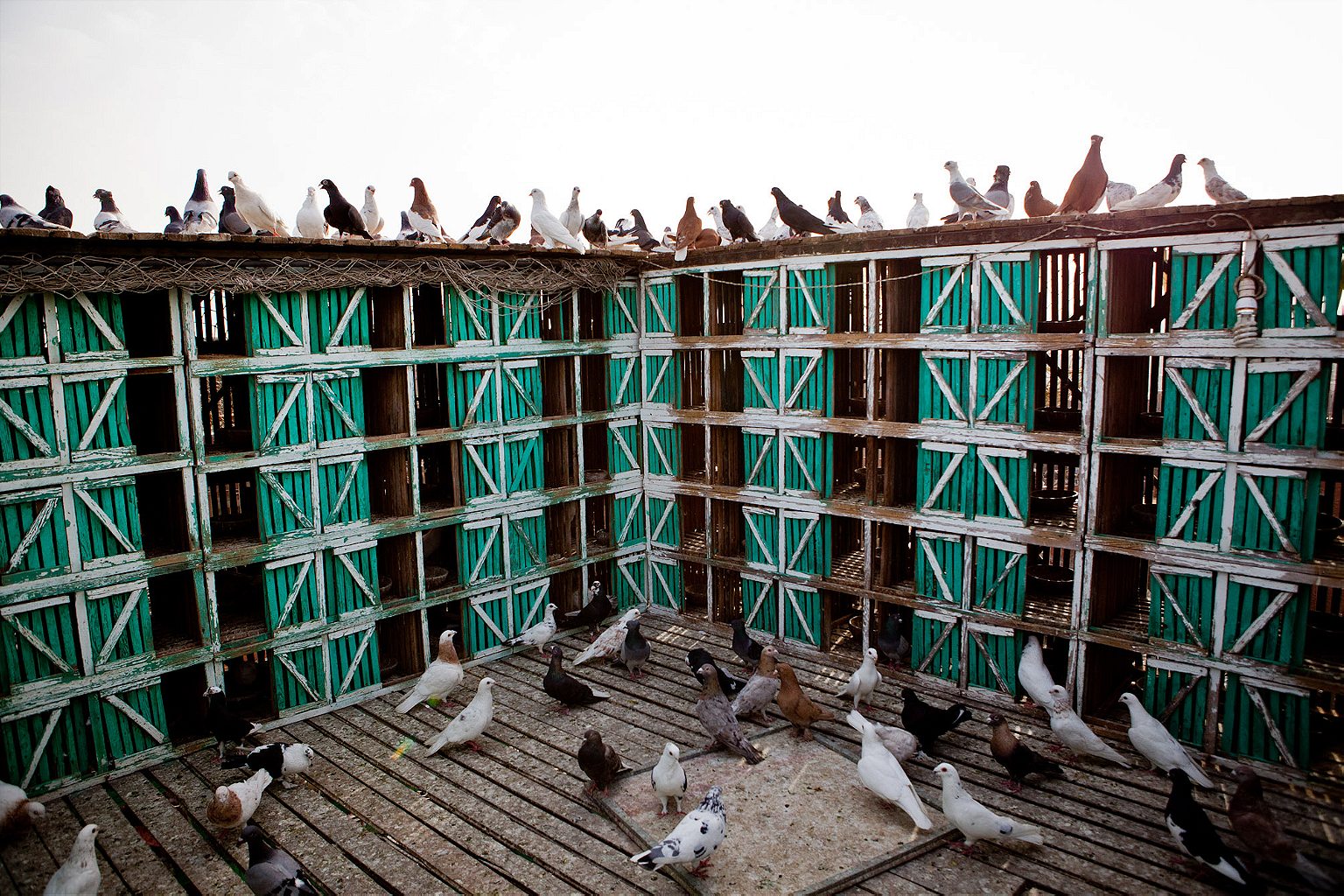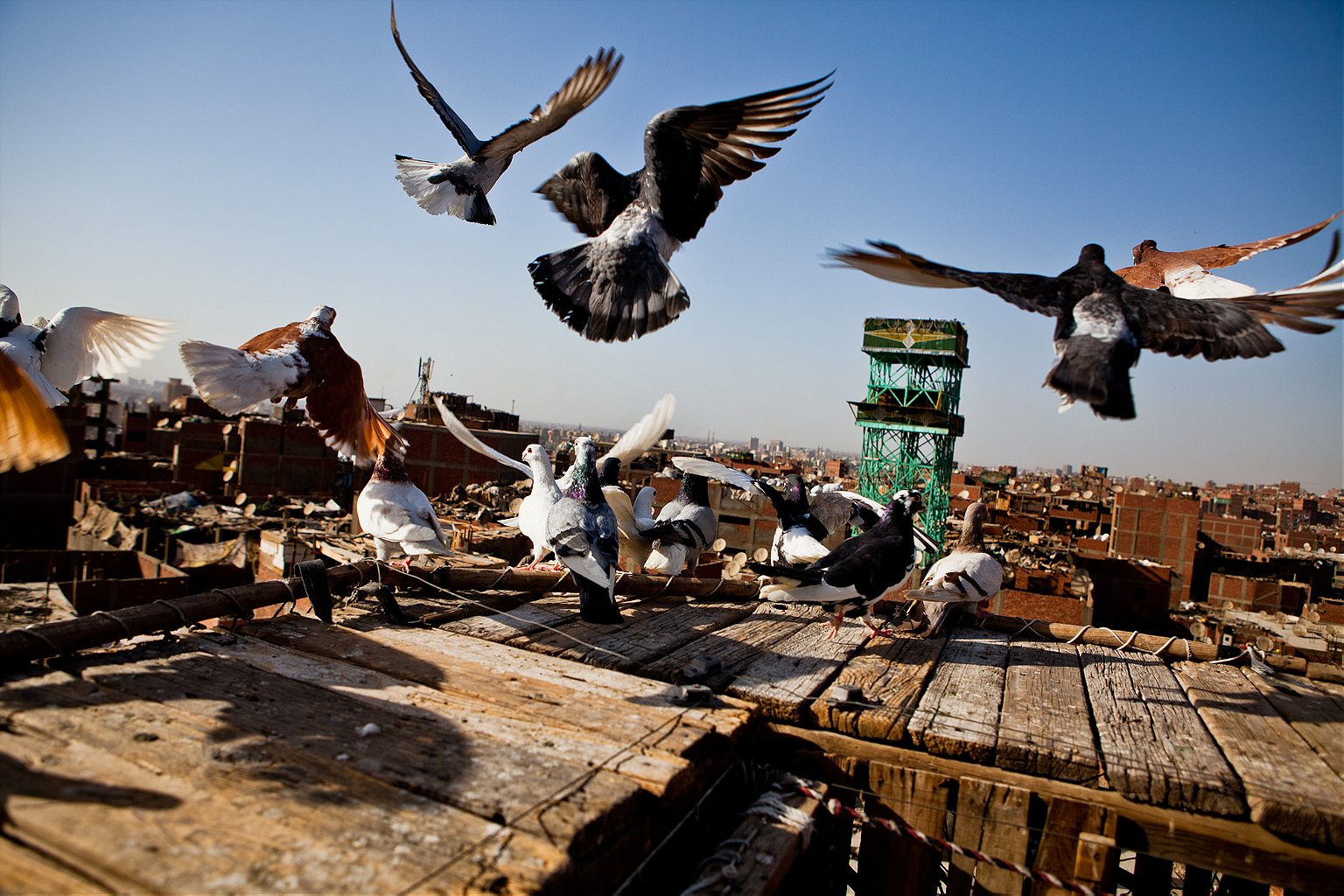A photographer shoots the pigeon subculture of Cairo to show a different side to today’s Egypt
When Amanda Mustard was searching for a city to start her photojournalism career in, Cairo was one of many contenders. She had visited the Egyptian capital before the revolution and remembered it as an “electric” place. When she returned in 2012, she decided to stay. The combination of low rent and high excitement made her forget New York City quickly and enabled her to concentrate fully on her work. But after a year of constant news coverage (she moved shortly before the first anniversary of the Revolution) in a city that continues to move from crisis to crisis, the young photographer started searching for longer stories that would let her breathe and focus on storytelling. That’s when she started shooting pigeons.
Roads & Kingdoms: So what is it about pigeons that fascinates photographers?
Amanda Mustard: It seems to have become a cliché, but I believe it’s one of those things that’s really easy to get creative with. Pigeons are really, really compliant subjects. When I was in the US, pigeons really didn’t occupy much of my mind. But after moving to Cairo, I started noticing these comically tall sheds painted brightly on top of buildings. I wondered what they were for a long time, and became fascinated with the subculture. Now that I’ve dug into the community here, I’ve noticed that although it started in Egypt thousands of years ago, pigeon fanciers can be found all over the world.
R&K: What was your first experience with pigeons in Cairo?
AM: I spent a lot of time in Garbage City. I really liked it there. That’s where I first noticed the pigeon coops. After 10 or so trips, I finally asked someone if I could climb up one. My first trip up into a coop was quite nerve wrecking, I can’t say that it ever got easier after. Most of the coops are built by their owners, and would by no means meet any Western safety standards. They were quite shaky, and there would often be children scrambling up the ladders and jumping around. That’s really been the only challenge, getting myself up without my knees shaking.
R&K: Let’s back up a second—what’s Garbage City?
AM: Garbage City is an area in the outskirts of Cairo, nestled up against a cliff. The population is roughly 90% Coptic Christian, and it is the largest community of Zabaleen (garbage collectors) in Egypt. They collect rubbish from all over Cairo, transport it back either by donkey cart or truck, where it is hand-sorted into organic waste and recyclables. Although there are perpetual health concerns, the methods of the Zabaleen are one of the most effective in the world. Generally, they will recycle up to 80% of the waste that comes in, when most Western waste management services will recycle 20-30%. I, like the majority of photographers who come to Cairo, decided to check it out when I first moved here. I found a great NGO called APE (Association to Protect the Environment) there, which I was keen to get involved with. They provide a good school for the children in the community as well as health services, and train women to make fair-trade handicrafts from the recyclables.


R&K: So thanks to the NGO, you were able to enter the community…
AM: Yes. I had heard a lot of rumors about aggression against foreigners coming with cameras, so I found the NGO online and called to ask if it would be alright that I come. I was told that a man named Bekhit would be happy to show me around, and that everything would be fine. He is a sort of tour guide for the NGO, showing visitors the different programs they offer. He has a wife and two children who go to the APE school. Garbage City is his home, and he wants to help change how people see the Zabaleen. It was incredible to see how tight the community was, and how positive the people were despite the conditions. Branching off into the pigeon story was a great privilege, and allowed me to see a completely different side of everything. As I climbed to the tops of the buildings, I would see many of their homes, some of which were absolutely beautiful. The Zabaleen are generally looked down upon in Egyptian society, and I was really happy to shed light on their lives outside of the trash-filled streets.
R&K: What happened when you told Bekhit you wanted to shoot pigeons?
AM: He didn’t completely understand why, since it was the equivalent of us owning a few dogs. But he shrugged, and we set off to visit some of his friends that had pigeons. It’s been a hobby in Cairo for thousands of years, so it’s not an anomaly. Regardless, everyone was thrilled that I was interested, and were more than accommodating. It was even easier after the first trip, as I returned with prints of the photos for the fanciers to keep, and they were really excited to get photos of their families and birds. Bekhit would translate for me. For the first few coop visits, he would wait on the street until I was finished but he eventually decided to come up with me—he had never actually bothered to go up into any of them before. He was pretty thrilled to be a part of it after that.
It’s one of the rare moments of peace that I’ve found in Cairo
R&K: So this is purely a hobby for them?
AM: While I’ve only been into a handful of the thousands of coops around Egypt, it seems to be mostly a hobby. There have been a few that say that they have eaten the pigeons in the past, but usually can’t stomach the idea, as the birds become prized pets. The vast majority of the pigeons are trained to fly and obey the commands of the owners (shrill whistles and the waving of flags). Others will breed them to showcase. The show pigeons are fascinating, some selling for thousands of Egyptian pounds to other collectors. They would breed them to perfect everything from the fanned tails and large chests, to having no visible beak. Most of the men are lower or middle class Egyptians, working regular jobs as carpenters or butchers, who fell in love with pigeons as children. My favorite part of the culture is how involved their kids are. The kids love to show me everything, from how to hold them to the babies that look like little dinosaurs. One fancier I spoke with said he had to build a special lock on the coop, because his three year old would try to sneak up to play with the birds. He joked that he was pretty sure his son loved the pigeons more than him.
R&K: What was it like being up there, on the roof of the city?
AM: Once you get up the rickety ladders into the coops, it’s absolutely beautiful. You get a panoramic view of the city, and it’s one of the few moments you feel like you can take a deep breath of fresh(ish) Cairo air. Generally the fanciers fly their pigeons before sunset, so you’ll hear the call to Maghrib prayer echoing across the city, dabbled with the whistles of men calling their birds. It’s one of the rare moments of peace that I’ve found in Cairo. When I ask the fanciers what makes all of the troubles of owning pigeons worth it (it can is fairly high-maintenance and expensive), their answer was unanimous: It keeps them out of trouble, and gives them relief of the political and social stresses of their country. It’s their little slice of heaven, teetering stories above the chaos below.


R&K: The Copts have suffered a lot since the revolution. Did you feel the tension in Garbage City?
AM: The Coptic Zabaleen keep to themselves, as most of society ostracizes them. I think it’s what makes the community so tight. But Garbage City has most of what they need, complete with the largest Coptic church in the Middle East, literally carved into a cave above the city with seating for 14,000. While I’m no expert, I can say that I have noticed a much denser group of fanciers in Garbage City. I definitely think their seclusion could be a contributing factor.
R&K: Covering Cairo, you must get asked a lot about the revolution and its aftermath. Is this pigeon project a way for you to show a different, “gentler” side of the country?
AM: When people ask me about what Cairo is really like right now, I spend most of my time explaining that when violence erupts, it usually blankets a fairly small area. The city of Cairo is 175 square miles, and I think people have this idea that the whole city is in flames and chaos when they see the news, when the reality is that it may be a few streets. I started the story on pigeon culture to show that life carries on normally in the majority of the city, and that there is more to modern day Egypt than what the media portrays. After two years of clashes and protests, people reading and watching get overloaded. The pigeon culture give a lighthearted look at one of the many beautiful cultural intricacies that Egypt has to offer.
To see more of Amanda’s photos, visit her website